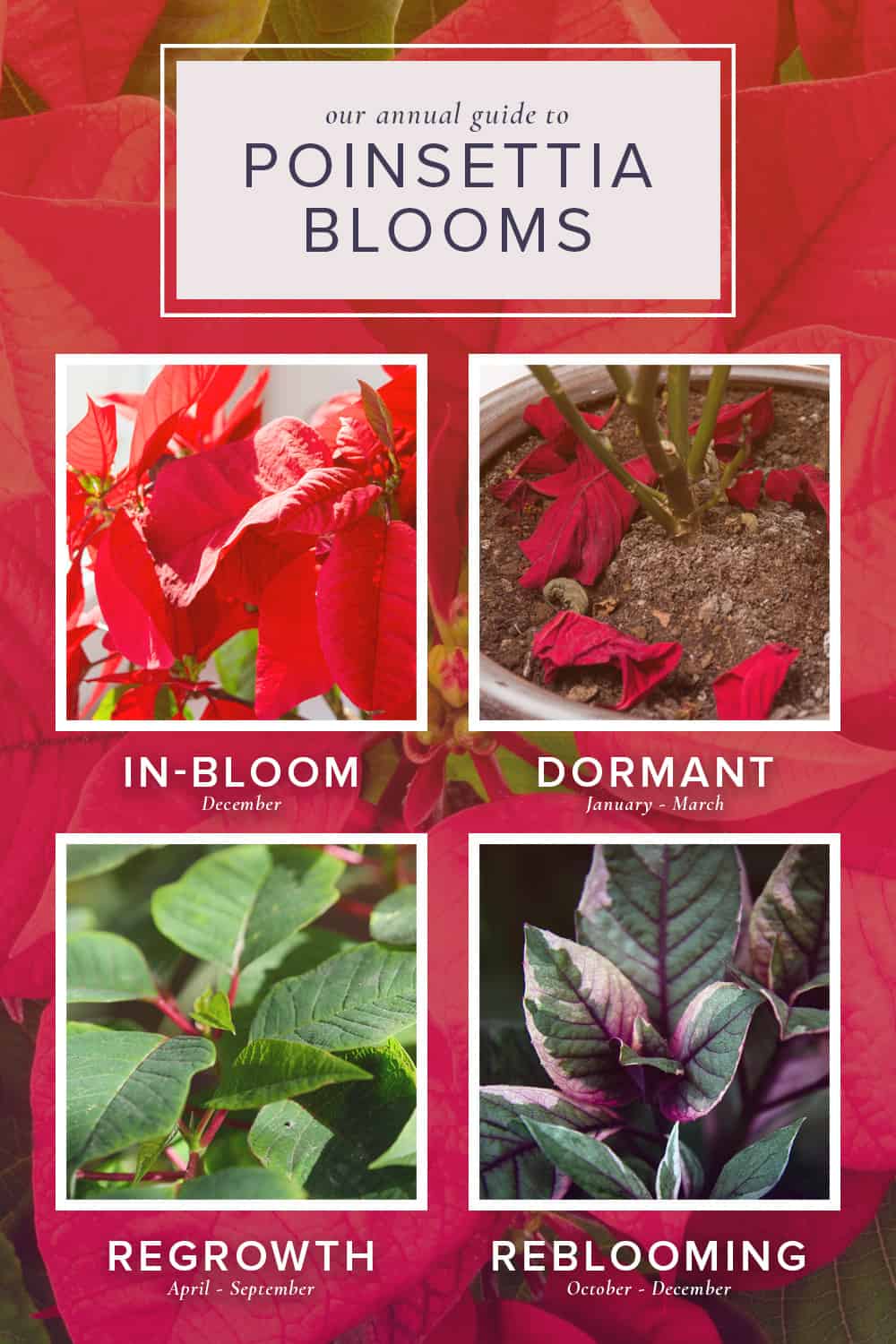A beautiful plant that has become synonymous with the holiday season, poinsettias bloom in the winter and seen everywhere at Christmas time. After the new year, though, many of these plants are tossed in the trash because they are presumed dead or dying. But, it is possible to keep your poinsettia alive and healthy all year long and maybe even rebloom for the next holiday season. Just follow the detailed guide the experts at Billings’ best florist shop, Gainan’s Flowers, put together for you here! Also, be sure to check out the helpful poinsettia care infographic at the end of this post.
Getting your poinsettia to flower again takes a bit of effort and there are no guarantees, but it’s definitely worth a shot!

Choosing a Healthy Poinsettia
The first step to keeping your poinsettia thriving year-round is to make sure you’ve selected a healthy one from the get-go. When shopping for a poinsettia, look for these signs of a healthy plant:
- An overall robust and healthy appearance with no faded or dying leaves.
- The small flowers should be tightly closed with no signs of pollen
- Don’t choose a plant that is displayed near automatic doors that open and close frequently as bursts of cold air damages the plant
- Check the moisture level of the solid to make sure it’s not too soggy or too dry.
- Look under leaves for insects, eggs, or evidence of hungry pests. You do not want those in your home!
- When you’ve found the best plant, keep it warm and happy on the trip back to your home.
Basic Poinsettia Care
- Poinsettias love bright natural light, so find a sunny spot that receives at least 6 hours of bright, indirect sunlight.
- Keep your plant away from cold drafts and heat from appliances. Also, make sure the leaves are not touching a chilly window pane.
- Water your poinsettia only when the topsoil feels dry to the touch. Allow the water to thoroughly drain out of the pot. Do not let the plant sit in standing water.

Caring for Your Poinsettia Year-Round
Jan – Mar: Make sure the plant receives at least 6 hours of indirect light. Water when soil feels dry. Leaves may fade and drop off – this is expected.

April: New growth should be appearing around this time. Now is the time to start using fertilizer.
May: Repot the plant to a container one size up and use fresh potting soil. Cut the stems back until they are roughly 5 inches tall.
Jun – Aug: When outside temps remain about 55 F, you can move your poinsettia outdoors into a partially shaded area. Continue watering and fertilizing as you have been. Pinch off an inch of new growth to encourage side branching.
Sep: Typically the weather begins to cool around this time so bring your poinsettia back indoors. Remove dead parts, check for pests, and return to a sunny, draft-free window.

Oct – Nov: This is the period where we try to coax the poinsettia to bloom again. It requires daily periods of sunlight and then complete, uninterrupted darkness. Beginning Oct 1, make sure your plant receives 12-15 hours a day of darkness by placing a box over it or keeping it in a dark closet. During the day, keep the plant in a sunny location and continue fertilizing and watering. Look for the leaves to begin changing color. Keep the darkness treatment going, usually, it takes 6-8 weeks, until your poinsettia has fully transformed.
If all goes well you’ll have a gorgeous rebloomed poinsettia to enjoy for another holiday season. There are no guarantees, though, as it can sometimes be difficult to coax a bloom, but it’s worth a try. If the whole process seems a bit daunting, that’s ok. Just support your local florist by picking up a new poinsettia each year.



